So you have a website.
And you feel like every single thing you do on your site is a huge learning curve.
- Do you really have to go in and Tweet, post to Facebook, or Pin things every single day?
- Are you doomed to only at adding 1-2 emails to your list each day forever?
- Do you have to spent a million dollars on Photoshop just create those cool-looking social media images the Instagram pros seem to have down pat?
But I have a secret…
The pros who make managing an online business seem effortless have a secret weapon. There’s no way they’re doing all of this on their own and doing everything else they need to do in their businesses.
So what’s their secret weapon?
They have a little black book of tools and apps they use to grow their businesses on autopilot and be massively productive….without them having to lift a finger.
Many of these apps were uncovered in the Growth Marketing ToolBox Podcast episode about 20+ growth marketing tools available. We reached out to our personal favorites, and today, we’re going to give you that little black book.
These are the only tools you'll ever need to start, grow, and profit from your online business or blog in 2017.
They’ll save you more time, money, and energy than you can even imagine, allowing you to use those resources on more important things. You know, like finding clients, creating products, and taking over the internet.
Oh, and we’ve broken them down into categories to make it super easy for you to follow along.
Social Media: Spread Your Brand (Without Spreading Yourself Thin)
You might feel like you’re fumbling in the dark with social media.
You can’t get into your audience’s heads. You can’t figure out how to creating engaging posts. And try as you might, your posts never get much more than a few likes or favorites.
But as frustrating as social is, it provides social proof, brings in traffic, and can even influence search engine rankings.
So what’s an entrepreneur to do? You could…
- keep doing what you’re doing and grasp at social media straws.
- hire someone full time to manage your social media, spending thousands of dollars monthly, or…
-
save yourself time, money, and frustration and just use these tools.
Hint: there’s only one right answer.
Buffer
What it is: The BEST tool available to schedule your social media posts to go out when your audience is online and engaged.
Real quick…
How much time every week do you spend on social media for your blog or business?
My guess is at least 5 hours. Maybe more. And if I could take another guess, I’d say that most of that time is… well, a little pointless.
Sure, you post content. But it sort of seems as if nobody even sees your posts.
Not only that, but you feel chained to your phone or laptop. Every hour you have to stop what you’re doing and post, otherwise you fall behind.
That is… if you’re not using Buffer.
Buffer is a social media automation tool that not only allows you to plan your posts ahead of time, but automatically posts them at the optimal times… you know, the times when your followers are actually online:

Because knowing when to engage with your target audience is just as important as how you
Engage with them.
You could sit around waiting for the exact right time to post, based on every social media accounts stats and numbers:
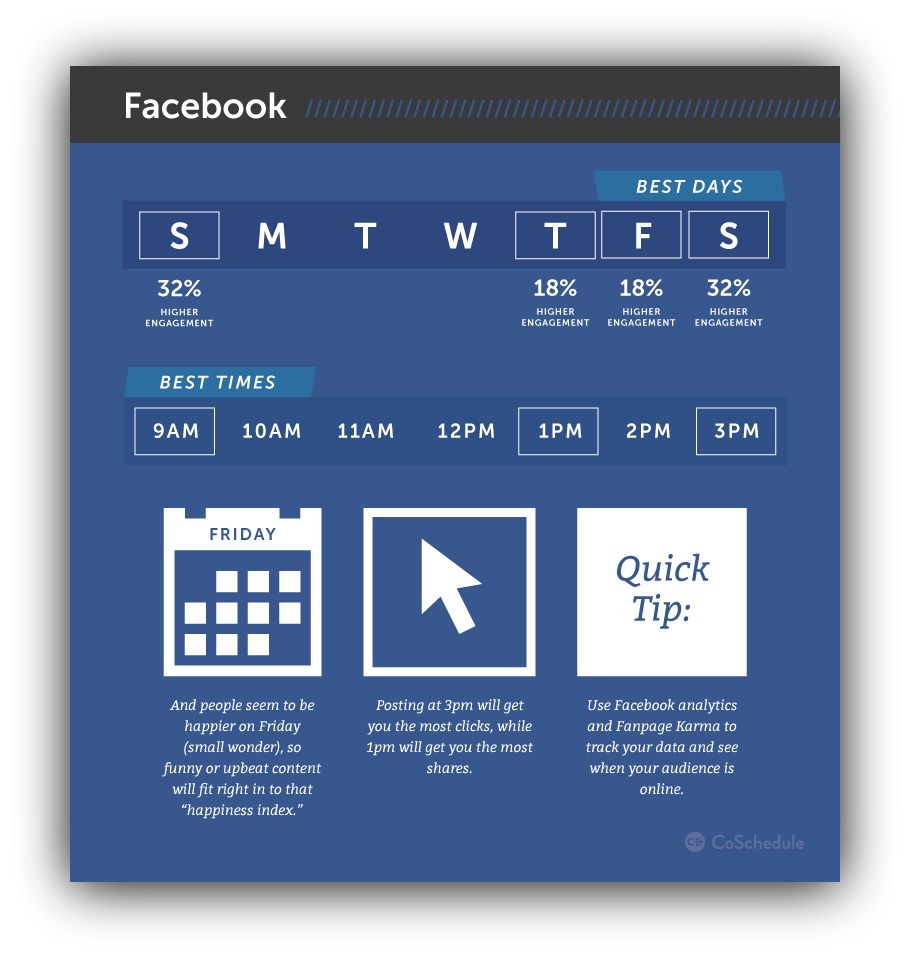
But more likely, you’ll end up posting whenever you remember to. And that’s like showing up at the town hall to deliver a speech you were asked to do without checking to see what time you were supposed to be there first.
Or you could use Buffer to publish your Facebook and Twitter content when your audience is online to see it.
Trust me. Your social stats will thank me.
Price: Starts at $10 per month.
Mention
What it is: A tool to monitor where you’re mentioned online and find influencers to mention you.
Do you know how many people talked about you online yesterday? Do you even know if people are talking about you at all?
You might think “Who cares? I’m getting visits to my website. It doesn’t matter what people say about me.”
Wrong-o. 83% of consumers say online reviews influence their perceptions about companies.
Even if you don’t run a big company, social proof (ie what people say about you) influences your traffic, email subscribers, social shares and even your bottom line for your blog, service or online business.
But here’s where people make a mistake. They think they need to hire a public relations agency ($10k minimum) to monitor all those mentions. Trading time for money and all that jazz.
But I have a secret: public relations agencies use the exact same tools you and I have access to.
And Mention is the go-to tool for monitoring what people say about you.

These brands use Mention. You may have heard of them…
Mention is like taking an entire PR agency and clown car-cramming them into a super easy-to-use tool. It scours the internet (social media included) for every.single.mention of your business and delivers it to your dashboard.
All you do is enter a keyword — usually your business name — and Mention goes to work:
And it’s not like you have to have a doctorate in statistics or get certified in Google Analytics to understand their reports. They’re known for having one of the most simple reporting systems around so you can really see what matters (without spending hours digging around):

Here’s the other cool benefit you’ll freak out over. You know how you go on Instagram or Twitter and see all these cool, high-profile people using/pimping out products? Wouldn’t it be cool if those same people did that for your product?
It seems like hard work, and it is. Unless you’re using Mention. All you do is type in a keyword and Mention instantly pulls up key influencers that would promote your product:
Then you just reach out to those influencers and make the magic happen.
Really, you can spend at least $10,000 on a PR agency. Or you can spend $300 a year to get the same thing and have more control with Mention.
Price: Starts at $29 per month
Snappa
What it is: A tool to easily create graphics for blogs, social media, ads, infographics and more.
Can you tell which one of these images was created by a professional designer?

Got a guess? Here’s the answer:
Neither. They were both made by Sean (a freaking copywriter), and they took five minutes each.
If you’ve ever wondered how those Instagrammers create those images with the text over top, or how your favorite bloggers make visuals to go with their articles and make them ultra-shareable, I have a secret:
You don’t need to drop 10k+ for a designer to create a few images. Just like you don’t need to pay Adobe $600 a year so you can struggle for two hours creating an average image for your content.
Just do what thousands of people do: use a game-changing tool called Snappa and create pro-level images for any situation in no time.
It’s a simple fact that images dominate social media. And anything you share on social media has a much higher chance of being clicked if you include an image:

But there are so many types of images on social media. That’s the beauty of Snappa: they have a pre-made template for any image you’d ever need:

Let’s say you needed to create an image for your blog post. I’ll show you in real time how quick I can make an image for that in Snappa:
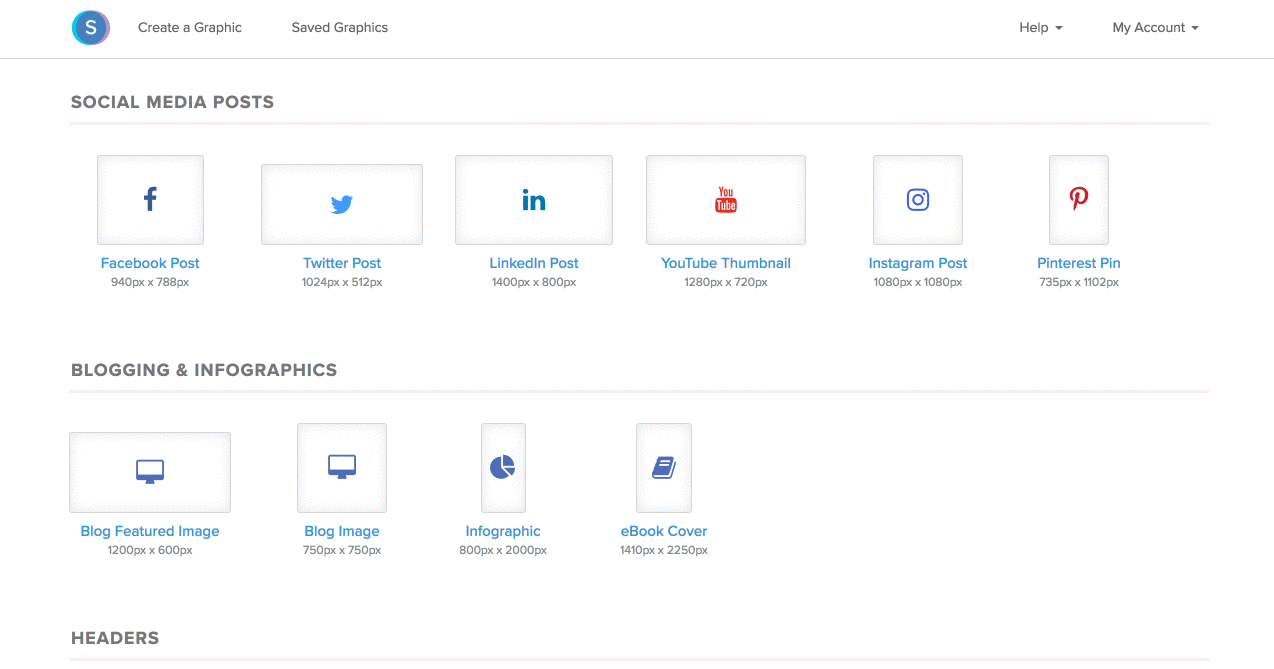
What was that? Under a minute? Damn.
It’s that easy because they have hundreds of pre-designed templates for every occasion. And the easy drag-and-drop builder doesn’t hurt either.
With Snappa, you don’t have to dig around for images on Google. And you don’t have to worry about your image attribution. They turn you into a badass professional designer that can crank out beautiful images in five minutes or less.
Price: Unlimited features starts at $10 a month.
Customer Success: Stop Your Customers From Leaving You
How hard do you work to get customers for your business?
Pretty damn hard. All those late nights and long days start to add up. But it’s worth it when you see that customer count go up and up.
But what happens when the majority of your customers leave after a month?

Pictured: you.
It doesn’t matter how hard you work to bring in customers if they leave right away. It’s like pouring water in a spaghetti strainer — you can fill it up as much as you want, but everything will eventually escape through the holes.
Here’s something even scarier: Not only are you losing customers and money, but you’re slowly creating a mob of pissed-off people that’ll tell everyone how much your product sucks.
Don’t believe me? A recent article written by Dana Severson stated that unhappy customers (or detractors) are twice as likely to share their negative experiences than happy customers are to share their positive experiences.
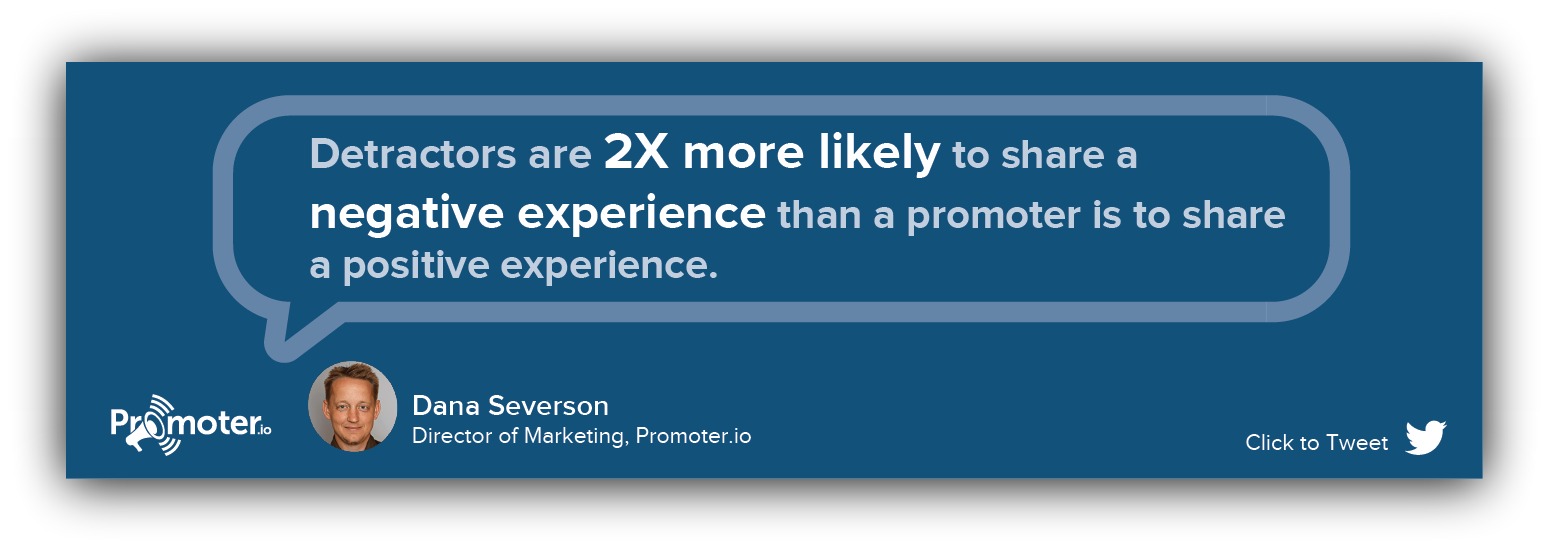
So keeping customers and keeping them happy should be a priority for you. Doing that comes down to two things:
-
Product Success: If your customers can’t figure out your product then they’ll cancel and leave. Helping them achieve the vision your product promised will make them stay.
-
Loyalty: It’s no secret that your loyal customers promote your product more. Keeping in touch with your customers will help you feel out who is loyal (and who isn’t).
When it comes to those two areas, there are no better tools than these next two.
Appcues
What it is: A tool that walks your new customers through your product.
Think about the last time you used a product online. You read some articles, saw reviews, and a sexy homepage swayed you to buy.
But when you opened that product, did you know how to use it all right away? Did you get frustrated when you couldn’t figure things out and those “Create X in 5 Minutes” claims seemed like big ol’ dirty lies?

C’mon, you can’t figure this out?!
That’s where Appcues comes in. They give you the tools to set up in-app tooltips — basically popups that teach your users — without needing to hire a single developer.
That in itself is insane. To give you context, there used to be teams of developers at companies that did what Appcues does. Here’s an example of those tooltips in Canva:

Instead of just clicking around and learning things, Canva uses Appcues to highlight the important features new users need to know.
This might seem like a simple addition to your product, but it has a profound effect on customers sticking around. Groove found free users who complete those onboarding “tooltips” within 24 hours of signup are 80% more likely to convert to paid users.
So obviously the 24 hour mark has become a Groove metric for early customer success. But you wouldn’t know that or get those kind of stats if you weren’t using Appcues.
It doesn’t take long to set up, and the benefits you and your customers will get is completely worth it. And, seeing how the uses are almost limitless — HubSpot and others use Appcues to communicate new product releases in-app — you’ll get insane bang-for-your-buck with this tool.
Price: Starts at $99 per month
Promoter.io
What it is: A tool to engage and learn from your customers.
Alright, so you’re using Appcues and your customers are all proper learned and whatnot. They’re happy, or so you think.
See, whether you know it or not, your customers are split into three distinct groups:
-
Promoters: These are the people that go ga-ga over your product. They shout your praises to anyone that will listen. Buy them something for Valentines Day. You should love them.
-
Passives: This is the majority of your customer base. They use your product and it’s just fine, thank you very much. They’re not blown away, but they’re neutral because you fill a need in their business.
-
Detractors: Hoooo boy. These are the people that just aren’t fans of your product. They might not be getting the results they’re looking for, or there’s some big pain point that bothers them. Either way, they’re unhappy, and that’s no bueno.
Do you know how many of your customers fall into each category? You should, because 50% of your detractors cancel in 90 days and 40% of your passives cancel in half a year.
That’s why a tool like Promoter is so critical to your business. They help you see which customers fall into each category based off how they answer simple survey questions. Once you know how your customers feel, you can reach out to them and try to win them back.
It sounds hard to do, but it’s surprisingly easy. All you do is import your email list into their tool and set up a survey email that looks like this:

And you can set up as many of these emails as you want — Promoter has a feature where it’ll automatically send emails every set number of days.
The magic happens once the responses roll in. You get to see the breakdown of where your customers fall on the loyalty scale:

This would be a great results with only 9% of your customers being detractors. But that information isn’t enough to do anything with because what are you gonna do, go on a witch hunt to find that 9%?
Luckily, Promoter gives you two other key stats to make this information actionable. First, they tell you the exact pain points from your survey:

From this, you can see customers love how easy your product is to use. BUT, a large majority of your customers aren’t happy with your pricing.
That gives you a big-picture look at things. But then Promoter gives you an even bigger insight:

You can actually see how each individual customer feels about your product. In this example, Abigail Poole (10) loves your product, so you might reach out to her to see if she’s promote your product.
On the flip side, Wendy Turner (2) hates your product. So you could reach out to Wendy and see what she doesn’t like (and try to help her out).
Promoter gives you the ability to keep your finger on the pulse of your customers. It helps make your product better, which in turn brings in more customers (and keeps them using it forever).
Price: Starts at $100 a month.
Email Marketing: Your Business’ 24/7 ATM
Building your email list is like investing…
Except you don’t have to spend a ton of money on shares, your return is somewhere around 3800% and uncovering “insider information” won’t land you in jail, a la Martha Stewart.
As you grow your business, your email list will become your ATM. It’s the most profitable marketing channel on the face of the earth (beating out social by around 20x).
But if you don’t want to talk about money, it’s one of the only marketing channels you 100% control, it’s one of the most reliable ways to drive traffic to your site and helps you learn what your customers, readers, or fans really want from you.
Nothing else can grow your business like your email list can.
But there’s one problem… you can’t email everyone at every hour of every day. I guess you could, but you’d look like this guy:

Imagine if you personally emailed 1,000 people a day with different messages, or had to hustle for every email address you collected. That’s madness.
That’s why you need tools to automate your email marketing.
Tools that help you set up systems that automatically send and collect emails on your behalf. Then you can sit back and watch as your system works round the clock to make you more money.
And these tools are the best in the world at doing that.
Sumo
What it is: 6+ tools made to increase your conversions, rolled into the only email collection app you’ll ever need.
So you know you need to grow your email list. If you don’t, your business will suffer financially.
But for some reason, that signup box in your sidebar isn’t exactly converting like gangbusters. And you’re pretty sick of logging into your email service provider and seeing this:

Zero, one, maybe two new email subscribers… and that’s a good day.
So you could watch the subscribers trickle in slower than molasses. Or, you could install Sumo, skyrocket your conversions and start getting serious about list building.
Then you can be like the guys at When I Work with their HR Toolkit:
“This resource wasn’t doing much for us but then we added Sumo and it immediately drove 6,000 email addresses.”
%(18)
Sumo helps you increase your conversion rate and grow your site traffic with email collection tools that actually work.
Don’t worry, it’s not just pop-ups. I mean, pop-ups work, so you should try them out. But if they’re not your jam, there are also tons of other ways you can use it to collect emails. Or just get your visitors to do anything.
Like the Welcome Mat, which scrolls down when your visitors land on your page to offer them something great (like this badass call to action Mat from Blender Babes):

Or Click Triggers, which allows you to make any HTML element on your website (like a link, a button, or an image) a two-step opt in form:

Or the Scroll Box, which politely asks for your visitors’ email addresses without interrupting them (like this one from Yoga Club):
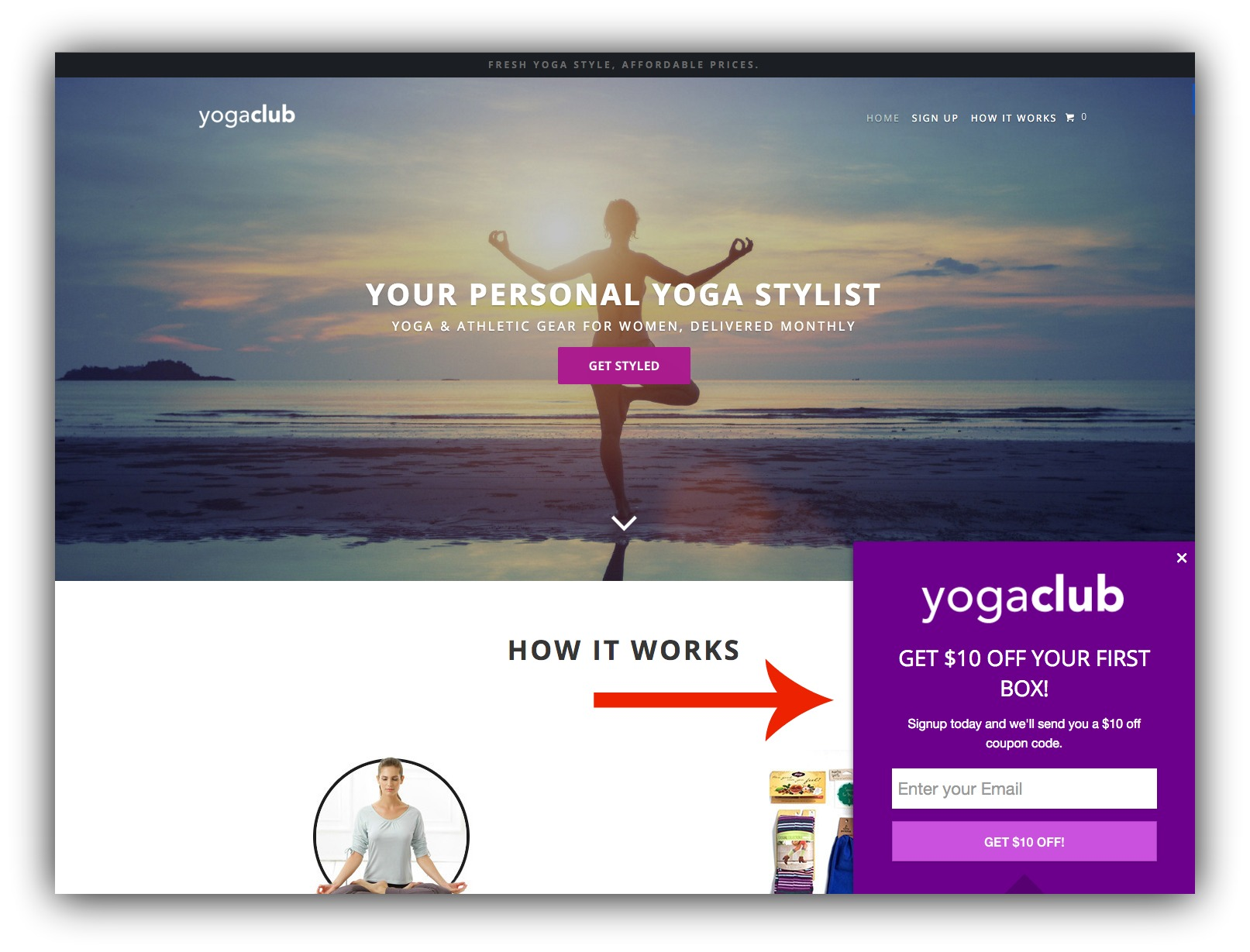
Or even Smart Bar, which allows you to place a call to action on the top of any page on your website (without having to hire a web developer):

Sumo is used by some huge websites. Think Tony Robbins, Wait But Why, AirBNB, and Entrepreneur.com.
Half a million websites are powered by Sumo. Yours should be one of them.
Price: Starts at $29/month
AutoPilot
What it is: A tool that automatically sends emails and SMS texts to people
If email automation is so obviously beneficial, then why doesn’t everyone use it?
Easy. Before AutoPilot came along, setting up automatic emails looked like this…

Do you know what to do with that? Me neither. And I do this kind of stuff every damn day.
That’s why Autopilot set out to make things easier by turning email marketing into literal adult LEGOS.
Say someone opted into your email list and you wanted to send them a welcome email to thank them. All you’d do is select a “trigger” — in this case, the act of submitting a form. You’d drag that trigger onto your canvas, then connect that to an email (you can create emails in Autopilot like you do in Gmail)::

Now, anyone who opts in to your email list will automatically get that email.
But that’s not the end of automation. Say a day after someone signs up for your list, you want to send them to a page on your website. Instead of waiting a day and sending that email yourself, you can set up a “delay” — basically set time between emails — and automatically send an email after that delay:

That’s the power of Autopilot and email automation. This machine runs 24/7, sending emails to anyone at anytime. You connect these “email LEGOS” to create comprehensive campaigns. Eventually you can get to the point where you build out massive systems like this:
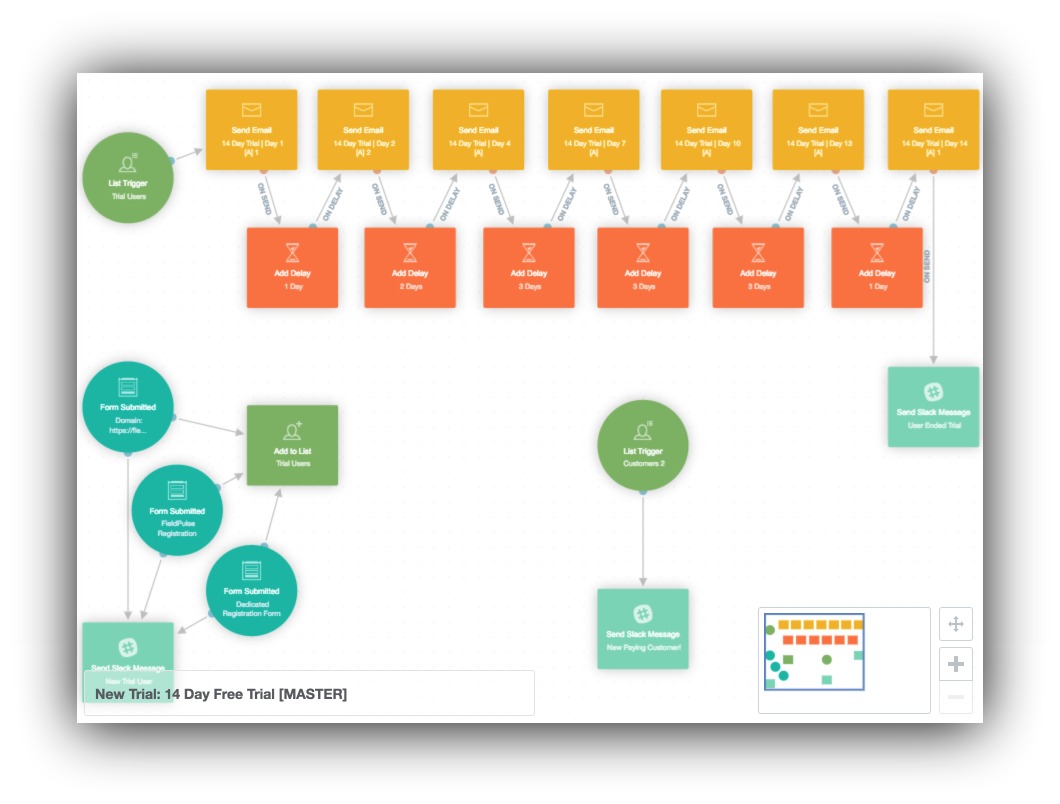
….but we won’t go that far yet, cowboy.
With a simple click drag and a drop, you can execute advanced outreach techniques with ease:
-
Send a postcard to you new big client.
-
Send a text reminder (yep, not just emails) to your list 10 minutes before your webinar starts.
-
Turn a blog reader into a full-fledged customer.
Plus, if you’re not sure how to set up your own automation, Autopilot takes 20 of the most common setups businesses use and provide those as plug-and-play templates.
Autopilot is a literal game-changer for your business. Once you set everything up, you get to sit back and watch your machine make money for you. It’s one of the most simple email tools to use today.
Price: Starts at $20 a month.
Mixmax
What it is: A tool that sends cold emails on your behalf (and let’s you see some crazy stats).
Maybe you’re a salesperson trying to track down new leads. Maybe you’re a hustler reaching out to everyone and anyone to get more customers. Or perhaps you’re in ultra recruiter mode to grow your company.
If you’re one of those people, Mixmax is a godsend. Because you know how time-consuming and ineffective it is to send cold email after cold email to people, writing different messages every single time.
Mixmax frees up almost all that time by automating your cold emails. You can set up a series of pre-written emails and, with one click, send them to anyone:

See how I select “Cold outreach” and my email is auto-populated with a message? Mixmax does that for me, and it’ll send the other three emails, too, if that person doesn’t respond. That means no more writing, waiting and sending tons of emails on your own.
Plus, Mixmax shows you some next-level stats to really show how effective your emails are:
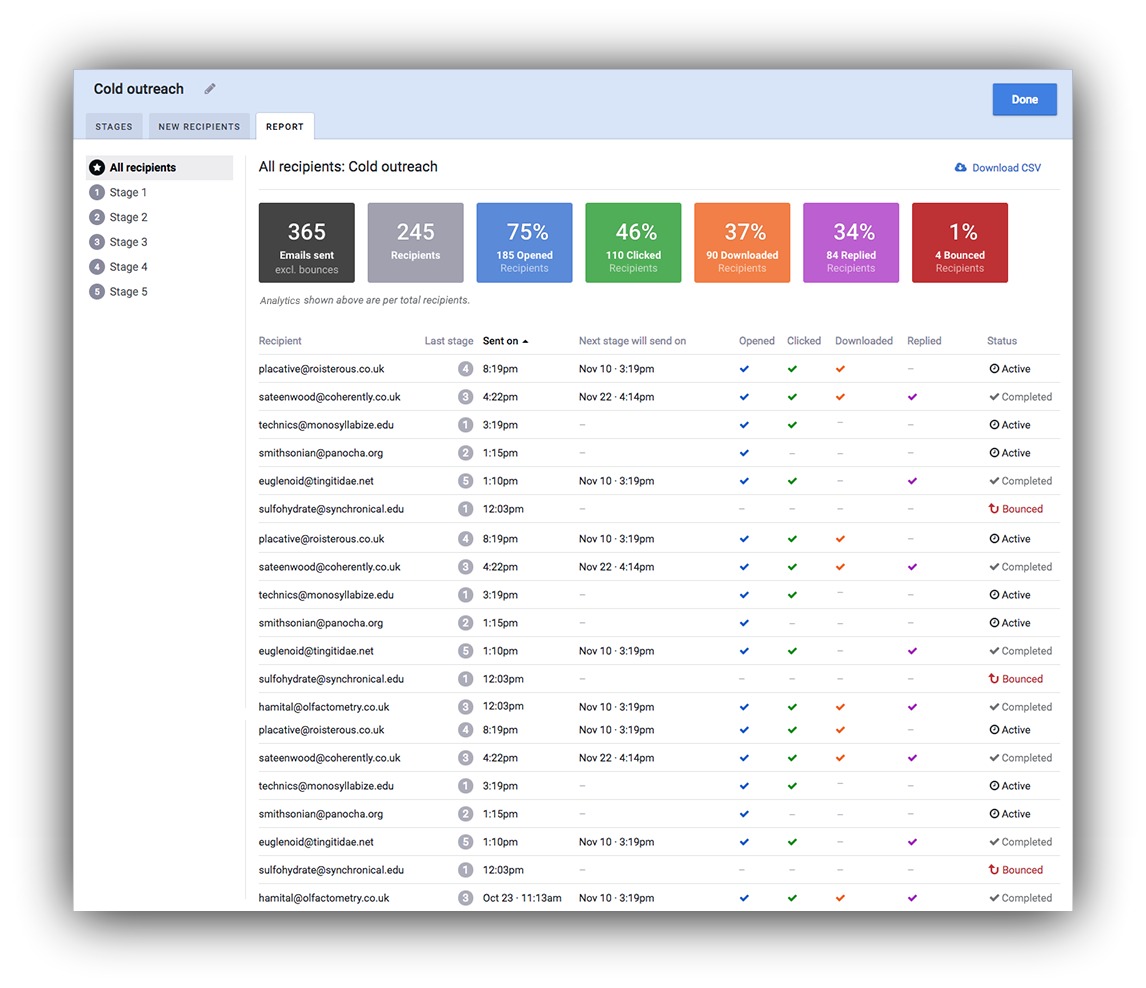
Not only can you see how many people opened your email, but you can see how many clicked your links or replied to your email.
You can also break it down to individual people, monitoring when they opened your email and if they actually clicked your link or unsubscribed.
Before I used this tool, I spent 20+ hours a week sending cold emails (without knowing if they were even being opened). Now, I spend maybe two hours AND I know exactly how each of those emails perform.
Mixmax can do even more, like automatically schedule meetings, schedule emails, send surveys and a whole lot more. But for my money (and yours), their automated emails and advanced analytics will have you hooked for life.
Price: Starts at $9 a month.
Analytics: Learning What Really Works (And What Doesn’t)
Imagine we’re going to a picnic and I tell you it’s 70 degrees outside. You pack a lunch, get dressed for the occasion and head outside…
But it’s raining hard with 30 MPH wind gusts.
You had a little bit of information to make a decision, but it was just a small part of a bigger picture. But since all you had was that one snippet of information, you ended up making a bad decision.

Unless this is your idea of a “successful picnic”
It’s the exact same concept when you’re making decisions for your business. If you only have one small piece of the picture then you’re bound to make bad decision after bad decision. Chasing what you think works without really knowing means losing serious time and money.
When you make decisions, you’re only as good as the information you’re armed with. That’s why these two analytics tools will give you the full picture your business deserves.
Google Analytics
What it is: The gold standard for tracking everything that happens on your website.
So here’s the truth. There were a ton of other tools I could’ve listed here. But when it comes to analytics, nothing beats the free version of Google Analytics.
It’s simply the best tool available for monitoring your website. You literally get to learn anything you want about the people that visit your site.
There’s the obvious stuff you get, like seeing how many people visit your site, how many are new vs. returning, how long they stay on your site and what your most popular pages are.
But that’s not where you get your game-changing insights. With the click of a button, Google Analytics can tell you who your audience is:

Where your traffic is coming from:

And even the general order of pages a typical visitor sees when they land on your site:
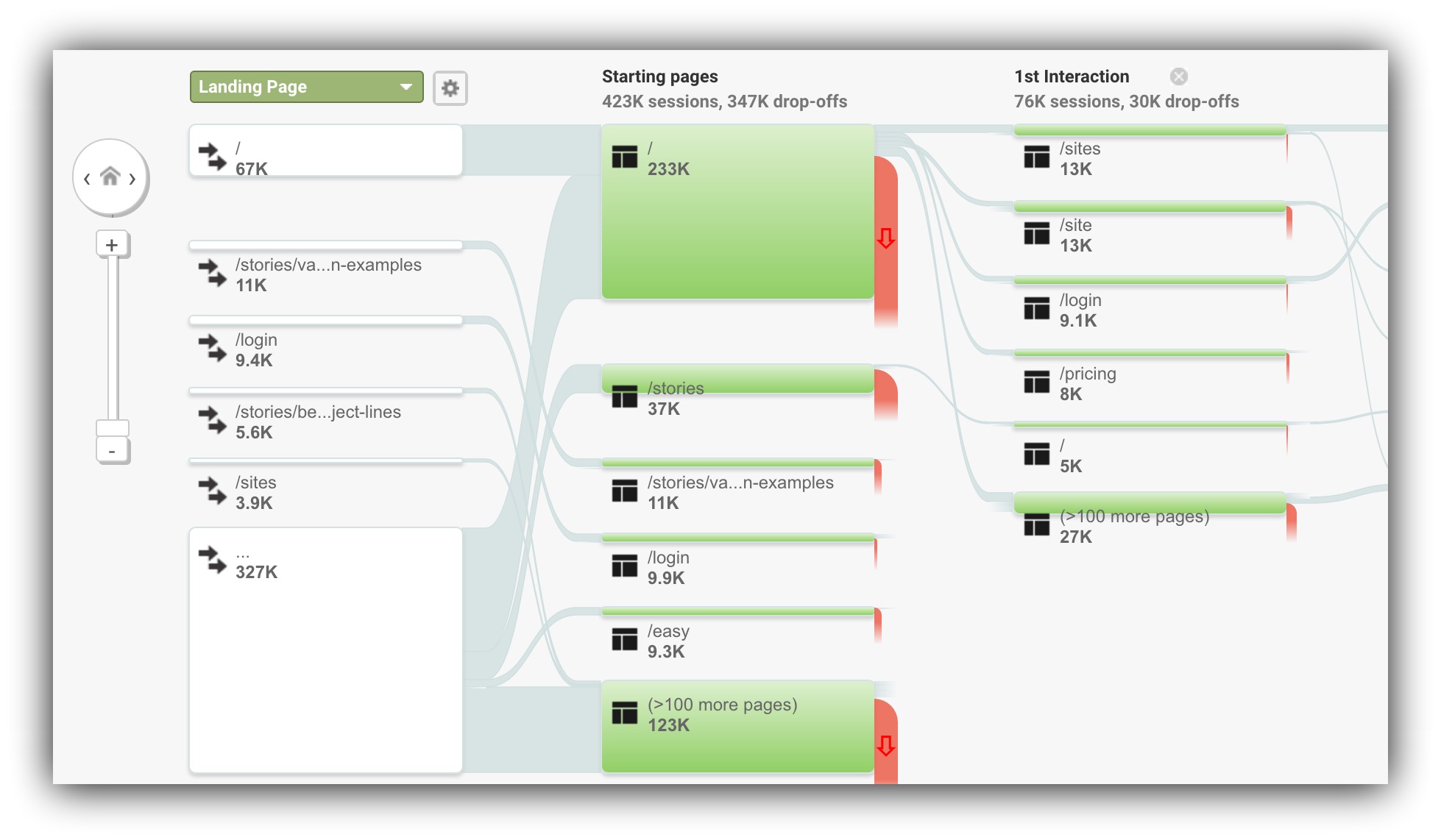
Bar none, this is the most powerful analytics tool you can use in your business. This great guide shows you how to get Google Analytics set up on your site, and they have plenty of other resources to show you how to use GA to its full potential.
You’ll never feel in the dark when making decisions after using Google Analytics.
Price: Free
EffinAmazing UTM
What it is: The app that helps you find out exactly where your traffic is coming from — even for those “impossible to track” channels.
Two things about this tool you should know up front:
-
This tool is a direct compliment to Google Analytics: You’ll use this tool to make your Google Analytics even better.
-
This tool is effing amazing: See what I did there?
While I might’ve led you to believe Google Analytics is all sunshine and roses, there are a few flaws that, if left unchecked, will leave you yanking hair from your head.
The biggest problem? Knowing where your traffic comes from. See, when you spend all that time promoting your business and sending links all across the interwebz, you want to make sure you aren’t wasting your time.
Case in point: if you share your link on two sites, yet one brings 2,000 visitors while the other brings 5, where are you going to keep promoting in the future?
That kind of information is important to know. But, surprisingly, Google can be pretty airheaded when you try to find that information:

Obviously the first source is easy to understand: people reach the page from a google search. But the second “direct” source is basically this:
You: “Hey Google! Where’d those people come from?”
Google: *Shrugs shoulders*
Google can’t identify where the traffic came from, which means you’re stuck in the dark guessing who drove what traffic.
Enter Effinamazing UTM.
This is a handy tool that helps you pinpoint exactly where your traffic comes from. You install their extension, plug in the URL you want to share and then specify where you’re sharing to:

By specifying the medium as “social” and the source as “reddit” I can take that link at the bottom, share it on Reddit and see exactly how many people visit my site from that link on Reddit.
And since that can seem like a pain to do for every single place you want to share to, Effinamazing UTM lets you create preset links. Meaning you plug your URL into the tool and it automatically spits out the links for every site you share to.
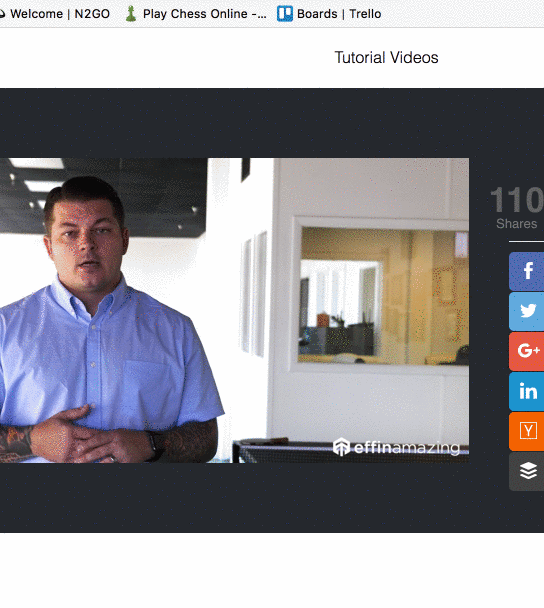
This is an absolute time saver when you want the most accurate results. There’s no point wasting your time promoting on sites that don’t bring you traffic, and Effinamazing UTM shows you exactly where you should focus your time.
Price: $50










Add A Comment
VIEW THE COMMENTS